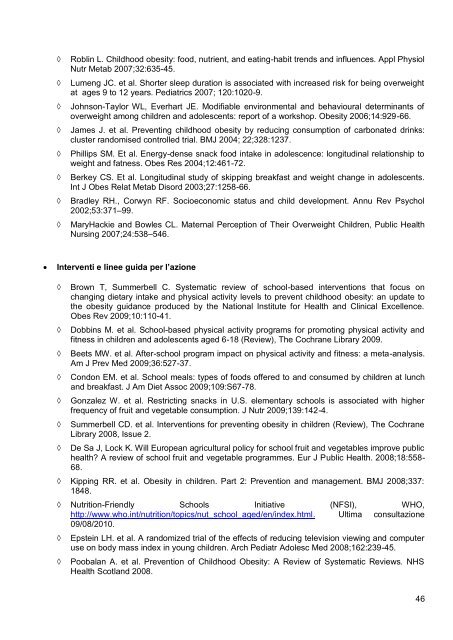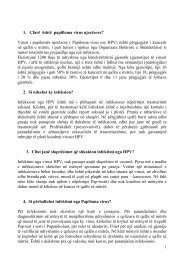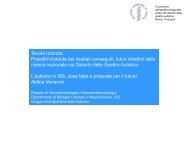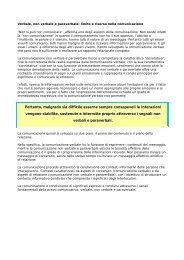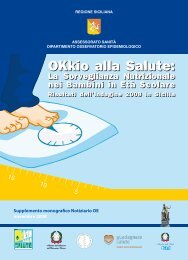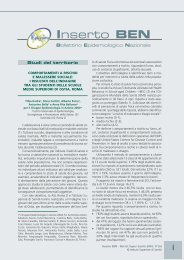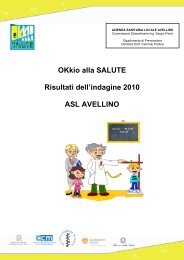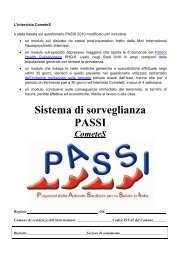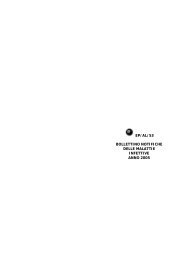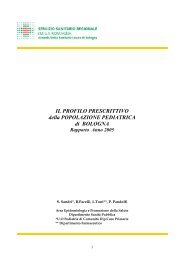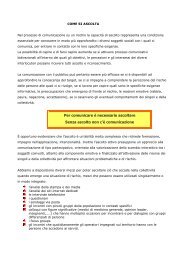Asl di Napoli 1 Centro - EpiCentro - Istituto Superiore di SanitÃ
Asl di Napoli 1 Centro - EpiCentro - Istituto Superiore di SanitÃ
Asl di Napoli 1 Centro - EpiCentro - Istituto Superiore di SanitÃ
You also want an ePaper? Increase the reach of your titles
YUMPU automatically turns print PDFs into web optimized ePapers that Google loves.
Roblin L. Childhood obesity: food, nutrient, and eating-habit trends and influences. Appl PhysiolNutr Metab 2007;32:635-45.Lumeng JC. et al. Shorter sleep duration is associated with increased risk for being overweightat ages 9 to 12 years. Pe<strong>di</strong>atrics 2007; 120:1020-9.Johnson-Taylor WL, Everhart JE. Mo<strong>di</strong>fiable environmental and behavioural determinants ofoverweight among children and adolescents: report of a workshop. Obesity 2006;14:929-66.James J. et al. Preventing childhood obesity by reducing consumption of carbonated drinks:cluster randomised controlled trial. BMJ 2004; 22;328:1237.Phillips SM. Et al. Energy-dense snack food intake in adolescence: longitu<strong>di</strong>nal relationship toweight and fatness. Obes Res 2004;12:461-72.Berkey CS. Et al. Longitu<strong>di</strong>nal study of skipping breakfast and weight change in adolescents.Int J Obes Relat Metab Disord 2003;27:1258-66.Bradley RH., Corwyn RF. Socioeconomic status and child development. Annu Rev Psychol2002;53:371–99.MaryHackie and Bowles CL. Maternal Perception of Their Overweight Children, Public HealthNursing 2007;24:538–546.Interventi e linee guida per l’azioneBrown T, Summerbell C. Systematic review of school-based interventions that focus onchanging <strong>di</strong>etary intake and physical activity levels to prevent childhood obesity: an update tothe obesity guidance produced by the National Institute for Health and Clinical Excellence.Obes Rev 2009;10:110-41.Dobbins M. et al. School-based physical activity programs for promoting physical activity andfitness in children and adolescents aged 6-18 (Review), The Cochrane Library 2009.Beets MW. et al. After-school program impact on physical activity and fitness: a meta-analysis.Am J Prev Med 2009;36:527-37.Condon EM. et al. School meals: types of foods offered to and consumed by children at lunchand breakfast. J Am Diet Assoc 2009;109:S67-78.Gonzalez W. et al. Restricting snacks in U.S. elementary schools is associated with higherfrequency of fruit and vegetable consumption. J Nutr 2009;139:142-4.Summerbell CD. et al. Interventions for preventing obesity in children (Review), The CochraneLibrary 2008, Issue 2.De Sa J, Lock K. Will European agricultural policy for school fruit and vegetables improve publichealth? A review of school fruit and vegetable programmes. Eur J Public Health. 2008;18:558-68. Kipping RR. et al. Obesity in children. Part 2: Prevention and management. BMJ 2008;337:1848. Nutrition-Friendly Schools Initiative (NFSI), WHO,http://www.who.int/nutrition/topics/nut_school_aged/en/index.html. Ultima consultazione09/08/2010.Epstein LH. et al. A randomized trial of the effects of reducing television viewing and computeruse on body mass index in young children. Arch Pe<strong>di</strong>atr Adolesc Med 2008;162:239-45.Poobalan A. et al. Prevention of Childhood Obesity: A Review of Systematic Reviews. NHSHealth Scotland 2008.46


